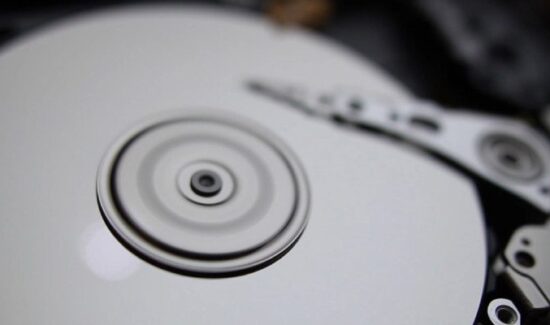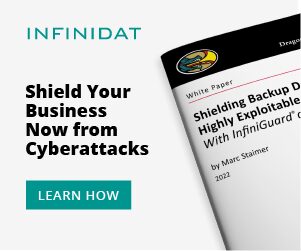Bet on Software When Evaluating Enterprise Data Storage


Solutions Review’s Contributed Content Series is a collection of contributed articles written by thought leaders in enterprise technology. In this feature, Qumulo CTO Kiran Bhageshpur offers commentary on why to bet on software when evaluating enterprise data storage solutions.
Storage is changing.
For years, the storage market had a reputation for being boring. Not today! The storage world is changing in ways that were unimaginable 10 years ago. But if you want to see what’s changing, don’t look to the legacy vendors (NetApp or Dell/EMC). They’re not leading the charge, and that should surprise no one.
A clue to why big changes never come from market leaders can be found in Clayton Christensen’s seminal tome: “The Innovator’s Dilemma.” Christensen posits that the real threat to established market leaders comes in quirky new approaches that don’t measure up to market-leaders (i.e., they are lower performance, more expensive, etc.).
These approaches are small emerging segments that don’t initially interest the market leaders. Disruptive start-ups employ innovative new approaches to attack these new markets. At first, these new approaches fall short of legacy vendor’s products — they lower performance, cost more, are slower, etc.
Software & Data Storage
Over time, these approaches find their footing, innovate, and eventually meet and wildly beat marketing-leading products because of their superior technological foundations. Here are some well-known examples:
- Digital photography: Digital photographs were horrible at first. They were expensive; printing was a pain, and lenses were laughable. But eventually, digital images became amazing! The quality surpassed traditional photography. At the same time, the world moved away from printing towards online viewing. And just like that, Kodak was dead.
- SaaS: At first, Software-as-a-Service had an awful user experience, poor reliability, and shallow functionality. But then, the world reached “peak PC,” the internet became pervasive and always on, and SaaS killed licensed software.
- Streaming entertainment: The first streaming entertainment was poor quality, bulky, slow, expensive, and had sparse selection of content. Cable companies were not impressed. But overnight, we saw 4K content emerge, lower costs, and explosion of quality content (Ted Lasso, Game of Thrones, etc.). Were cable companies finally impressed? Hard to say – most are dying now!
So, Where are The Next-Gen Storage Challengers?
Christensen promises we’re ripe for an onslaught of challengers who will address the needs our legacy vendors have ignored (Example: Cloud). But where are they?
It turns out Christensen’s story is just half the story. Marc Andreesen revealed the rest of the story. In a now-famous blog from 2011 (“Why Software Is Eating the World”), Andreesen makes the case that technology’s future was in software, not hardware. Examples include:
- Amazon ate Borders by replacing bricks and mortar with software.
- Netflix replaced cable in the ground with software.
- iPhone killed Blackberry with – you guessed it – software.
Andreesen’s message is simple: Software is where true differentiation lies. Why? Because innovating hardware is brutally difficult! It is too expensive (and slow) to change hardware.
The only companies that can succeed at hardware innovation are those that play at massive scale – usually at the consumer level. Look at how Samsung and Apple have bent the price/performance curve for SSD storage due to the massive scale at which they manufacture phones. There are enormous, fixed costs to hardware, but at massive scale, you can outrun those costs. This is virtually impossible in B2B markets.
Plus, even if you’re lucky enough to win round one (i.e., introduce a hardware innovation that beats the legacy guys), you’ll never keep that lead. If the market zigs and you zag, you’re done.
These issues disappear with software. Especially in a CI/CD world, the pace of software innovation is lightning-fast, and fixed costs are trivial.
A Graveyard of Storage Challengers
The opportunity for next-gen storage challengers is ripe! The legacy vendors (Dell/EMC and NetApp) are stuck in the on-premises world. They build hardware-optimized storage appliances focused on-premises storage performance.
That makes sense – that’s classic legacy stuff. Unfortunately, there’s been a 15-year stretch of disasters as next-gen challengers missed Andreesen’s message (innovate in software, not hardware).
- In 2010/2011, Violin identified the need for faster, cheaper storage. Flash was expensive and the company tried to address this with hardware (their flash fabric architecture). They raised $185 million in funding and went public in 2013. But then Flash memory prices dropped and the company went bankrupt in 2016.
- BlueArc shared a similar fate. Intel X86 servers were slow and BlueArc build a high-performance NAS that placed the file system in an ASIC. The hardware improved to the lint that BlueArc lost its advantage. Hitachi Data System bought BlueArc, saving the company from bankruptcy.
With these (and other) high-profile catastrophic failures, one would assume that the latest generation of storage platform challengers would have learned and eschewed the strategy of trying to innovate in hardware.
Not so much! If you look at Pure and VAST, both are optimizing hardware to address market needs the legacy guys aren’t serving (mostly around high-performance storage). Pure wrapped its sheet metal around NAND flash, while VAST leverages QLC Flash storage.
But, hardware? Really? This is precisely where Andreesen is correct. Software will eat the storage market, not more hardware!
What will they do when flash gets faster due to massive consumer trends? Or if QLC doesn’t drop in price quickly enough? Both Pure and VAST will be stuck trying to catch up with massively expensive – and slow – hardware innovation.
Good luck! They won’t be able to maintain a long-term advantage with a hardware strategy.
What’s an Enterprise Storage Manager to Do? Here is what I tell my customers:
- Don’t worry too much about short-term costs – simply enjoy the ride down the pricing curve driven by massive consumer companies.
- Whatever you do, don’t chase short-term price advantages delivered by the hardware optimizers – the lessons of the past decades show those advantages will be short-lived, and you’ll be looking for a new storage vendor.
- Do take a page out of Andreesen’s book and look for a storage partner innovating with software and leveraging commodity widely available infrastructure hardware. You’ll see vastly quicker improvements from a vendor who is there for the long-run.
In other words – bet on software!
- Bet on Software When Evaluating Enterprise Data Storage - August 24, 2023




















